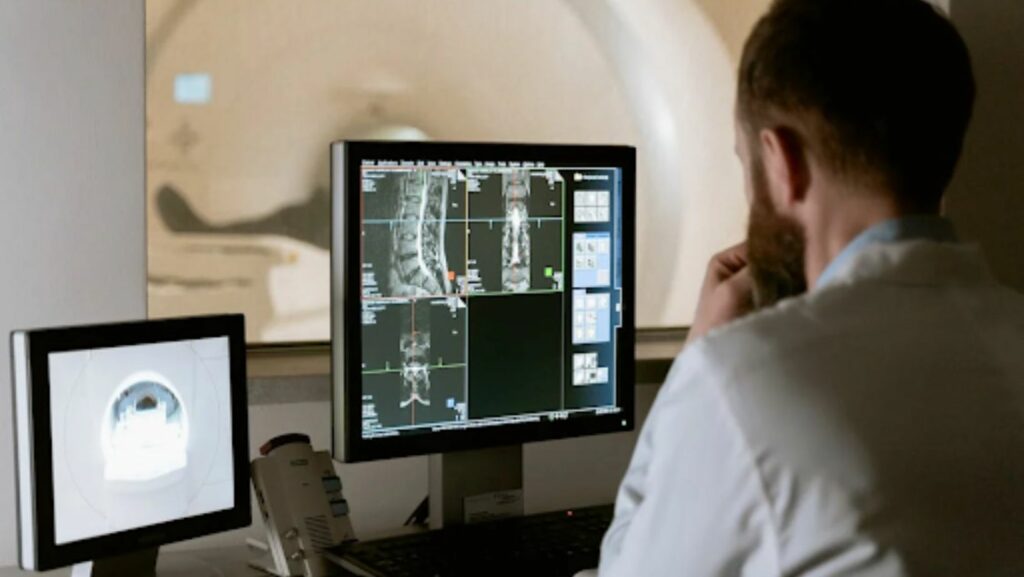
The healthcare industry has undergone a digital transformation. With Electronic Health Records (EHR) and Electronic Medical Records (EMR), it has quickly become integral tools for improving patient care. These revolutionary systems have streamlined healthcare delivery in numerous ways.
Revolutionizing Healthcare Delivery With EHR And EMR Systems
Source: Center of Disease and Control
As 75% of physicians now use EMRs, it’s evident that these systems have become indispensable in modern healthcare. But what exactly makes EMRs/EHRs so crucial?
Fundamentally, EHR and EMR systems offer real-time digital access to comprehensive medical data. Both EHRs and EMRs provide information about the patient. The main EHR and EMR difference is that electronic health records are built to be shared through multiple providers. While electronic medical records are useful for the rapid transfer of patient information within the same medical facility or group, electronic health records allow data transfer between different hospital institutions. This is particularly helpful for long-term care.
The use of both signifies a seismic shift from paper records, dramatically enhancing healthcare delivery. EHRs and EMRs enable patient-centered, data-driven care by consolidating medical information into an accessible, sharable format.
The digitization of health records has transformed healthcare from a fragmented industry relying on paper files to an integrated ecosystem where providers can instantly access patient data. This paves the way for improved diagnostics, treatment planning, and coordination between healthcare professionals.
Specifically, EMRs and EHRs facilitate prompt information exchange between primary care providers, specialists, labs, pharmacies, and other entities. This yields fully informed, coordinated care tailored to the patient’s needs. Immediate access to test results helps accelerate treatment plans while medication lists with active prescriptions reduce risks of adverse drug interactions.
Additionally, the streamlined aggregation of patient data from various sources makes it easier to spot trends and patterns. This allows for earlier interventions in emerging health problems, proactive chronic disease management, and more vigilant tracking of vitals.
The Power of Complete Information: EHRs And Improved Patient Care
One of the key reasons behind the widespread adoption of EMRs is their ability to enhance patient care. As statistics show, they play a vital role in achieving targets related to chronic disease management and prevention.
The comprehensive medical histories within EHRs empower providers to make better-informed, personalized care decisions based on a holistic view of the patient. This results in increased patient safety and more effective treatment plans tailored to individual needs. Factors like drug allergies, previous diagnoses, and lab results are easily accessible, reducing medical errors.
EHRs also promote patient participation in their own healthcare journey. Features like patient portals allow individuals to review test results, schedule appointments, and communicate with doctors digitally. Patients feel more in control of their treatment path with convenient access to their own medical information.
Specifically, patient portals facilitate transparency regarding health status and care plans. Individuals can view detailed lab results, radiology images, and clinician notes on their own time. Secure messaging enables prompt clarification of care instructions and immediate reporting of side effects or concerns.
Additionally, EHRs can incorporate patient-reported data on symptoms, quality of life, medication adherence, and other metrics. This subjective feedback complements objective EHR data to promote highly personalized care attuned to the patient’s needs and preferences.
Enhancing Provider Workflow Through Automation And Streamlining
But it’s not just about improving patient outcomes; EMRs also streamline the workflow for healthcare providers. Exploring further, you’ll understand how these systems enable clinicians to see more patients while maintaining the quality of care.
EMRs eliminate the need for rummaging through filing cabinets to locate records. Doctors can instantly pull up detailed patient histories and previous visit information at the point of care. This saves valuable time and enables clinicians to focus on delivering optimal treatment.
Administrative tasks like prescription refills and referrals are automated through EHRs, reducing paperwork burdens. Billing and coding processes also become more efficient and accurate. In these ways, EMRs and EHRs streamline mundane chores and allow providers to maximize time spent with patients.
According to Canada Health Infoway, EMRs give clinicians greater access to comprehensive patient histories, contributing to practice efficiencies. The automation enabled by these digital records is key for cost savings and productivity in modern healthcare.
EHRs: A Catalyst For Better Decisions And Coordinated Care
Moving forward, let’s explore the broader landscape of Electronic Health Records (EHRs), which build upon the foundation laid by EMRs. As evidence suggests, EHR interventions can lead to tangible improvements in patient health, including a notable reduction in blood pressure.
A major advantage of EHRs is their ability to facilitate the seamless flow of health information across the care continuum. Data is transmitted securely between healthcare entities, enabling coordinated care transitions. This yields better-informed decision making as various providers can access up-to-date patient records remotely.
According to a randomized clinical trial published in Addiction Journal, EHRs can have a measurable impact on clinical outcomes. The study found that an EHR-based intervention reduced systolic blood pressure in hypertensive patients. EHRs were leveraged to enhance medication adherence and lifestyle modifications.
EHRs act as a catalyst for timely, collaborative care by aggregating patient data into one centralized platform accessible across care settings. Health issues can be identified sooner, diagnoses expedited, and treatment plans executed rapidly thanks to prompt access to integrated medical information through EHR systems.

Frequently Asked Questions (FAQs)
How do EHRs contribute to improved diagnostics and patient outcomes?
EHRs allow providers instant access to comprehensive medical data including symptoms, test results, imaging scans, and more. This complete view of the patient enables earlier diagnoses and better-informed treatment decisions, improving outcomes.
In what ways do EHRs promote patient participation in their own care?
Patient portals within EHRs let individuals schedule appointments, communicate with doctors, review test results, and manage medications online. This empowers patients to take charge of their own healthcare journey.
What are the key features of EHRs that lead to practice efficiencies and cost savings?
By automating administrative tasks like billing and coding, eliminating paperwork, and enabling quick access to patient histories, EHRs significantly streamline clinician workflow. This results in cost savings and productivity gains.
How can the adoption of EHR systems help reduce medical errors?
EHRs consolidate patient data from disparate sources into one place, giving providers a comprehensive view. This reduces errors due to fragmented paper records. Alerts also flag potential medication interactions.
What are some of the biggest challenges around EHR system adoption and how can they be mitigated?
Challenges include high costs, change resistance, workflow disruption and technology learning curves. Gradual rollout, training programs and user feedback help drive adoption. Financial incentives also motivate participation.
How does the ability to share and exchange health records electronically improve coordination of care?
Real-time sharing of records between health facilities ensures various providers can access the most up-to-date patient information. This mitigates duplication of tests and procedures while enabling seamless care transitions.
Key Takeaways: Streamlining The Healthcare Process
The digital transformation driven by EHR and EMR adoption has optimized healthcare delivery across the board. These innovative health information systems reduce medical errors, promote informed treatment decisions, enable patient participation, maximize clinician efficiency, and facilitate care coordination. The result is safer, timelier, and more collaborative healthcare centered on the patient’s needs. EHRs and EMRs are integral tools for revolutionizing care in the 21st century through data-driven, connected care pathways.













